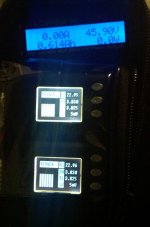Gregory
100 kW
dnmun said:Back Light is self explanatory but if someone can put a handle on the other stuff it may be useful for the arduino hackers. like RS and RW
dnmun a google for ""1602 lcd display arduino"" will give heaps of info on the web, including pinouts. Sounds like it's a regular 16 character by 2 line display.
Start here http://arduino.cc/en/Tutorial/LiquidCrystal


